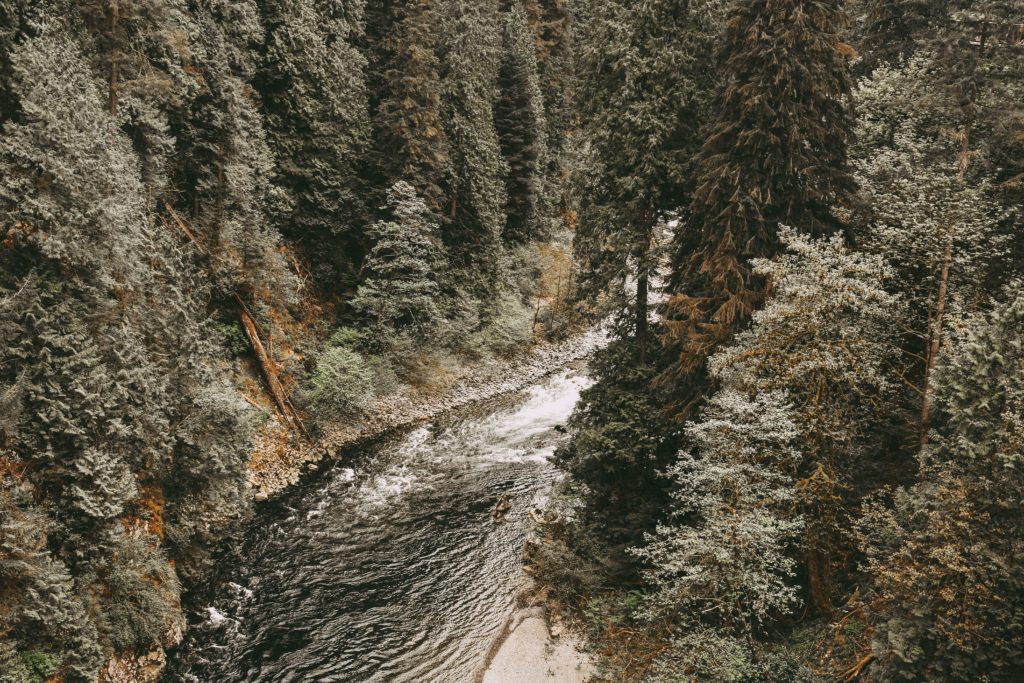
Fall Walleye Fishing in the River
Fall walleye fishing is one of the most enjoyable times of year to target these fish. The daytime temperatures have dropped, the insects have disappeared, and the walleye bite has increased. All you need is 2 rods, a bucket of golden shiners, and a few lures to cast and you are on your way to catching a limit. I have explained a couple of easy tactics for fall walleye fishing that will increase catch numbers and maybe even land you a monster.
Bottom Fishing
Bottom fishing is a method in which an angler will attach a drop weight to their line (usually a Lindy sinker), and fish a suspended bait anywhere from 8 to 12 inches off bottom. The setup is simple for this rig. Tie a 3-way swivel onto your line using a fisherman’s knot. Cut a piece of fishing line roughly 12 inches in length and tie an end onto one of the remaining 3-way swivel eyes. On the last eye of the swivel tie another cut piece of line that is 8 inches in length.
After you have completed this step, there should be the line from the fishing pole tied to one eye of the swivel, a 12-inch line tied to another eye, and the 8-inch piece tied to the final eye. Okay, now you need to analyze the river and see how fast the water is moving. If it is slow tie a 0.5-ounce Lindy sinker to the end of the 12-inch piece of line. If it is fast tie on a 1-ounce weight. Finally, tie on a size 6 hook to the end of the 8-inch piece of line. You have completed the bottom fishing rig.
Take a golden shiner minnow and hook it through the lips. I like to place the tip in the nostril of the minnow and push it through until it is protruding out of this lower jaw. Center the minnow onto the bend of the hook. Using this method keeps the minnow in a natural position while sitting on bottom and will entice more bites from nearby walleye.
Cast the rig into the water, look for eddies or other slacks in the water because this is where walleye like to feed. Keep your open-faced reel open to allow enough line to free spool until it reaches bottom. This can be seen by an excessive amount of slack in the line, it resembles the curvature of a belly. Once there is a belly in your line, flip the bale over and reel until the line is tight. Set the pole on a Y-stick and wait for a bite.
Once the tip of your rod is starting to bounce, pick it up and give the walleye some time to take the minnow. Lower your rod tip slowly to give him the bait, and then slowly lift the rod tip. If you feel the walleye on the line, set the hook by lifting the rod tip sharply. Proceed to reeling in your catch. This method works well with all fish in the river. Using this method while fall walleye fishing you will also catch northern pike, perch, bass and even muskie.
Casting/ Jigging in the River
Fall walleye fishing can also be done by fishing with either a jig or a lure. Casting or jigging is a method in which the angler throws a lure into the river and retrieves it perpendicular to the shore line. This is done to simulate a minnow heading for shore and looking for either food or cover. This method is extremely effective when fall walleye fishing.
The setup for a lure and jig are the same. Select a lure that resembles the bait fish that are in the river. This is generally a shad or even a perch. Attach the lure or jig to the rod by a fisherman’s knot. Cast the lure into the slack water or eddies in the river channel. If using a jig, allow it to sink to the bottom before retrieving. Slowly reel in the bait, and give it some action by twitching or jerking the tip of your rod.
Walleyes are sluggish in the fall because the are getting ready to head to the spawning regions. Using slow reeling and twitching techniques to entice them to hit. Keep working the river by casting at various locations. This will allow you to completely cover the river channel and allow you to find the fish.
Once you determine where the walleye is laying, repeatedly cast into that area and mimic the techniques you used to catch the walleye. Once the walleye quit hitting, try switching up the lure or jig colors, or move to a different spot entirely.
The most productive time to fish walleye is in the early morning hours, and the late evening hours. Walleye are generally night feeders so fishing these times will help to increase your catch numbers. These two methods are the most effective that I have found for fall walleye fishing. Click the link to learn more on the best walleye fishing lures, walleye fishing in the lake, or trolling tactics.
Remember, fishing walleyes is a hobby that takes time and patience. Mastering the tactics on this blog will allow anyone to become a better fisherman and increase their catch numbers. Knowing all the information you can on these fish will prove beneficial for years to come. To learn more on how to catch fish in the winter In-Fisherman has more great article on Cold-Weather Walleye Fishing.